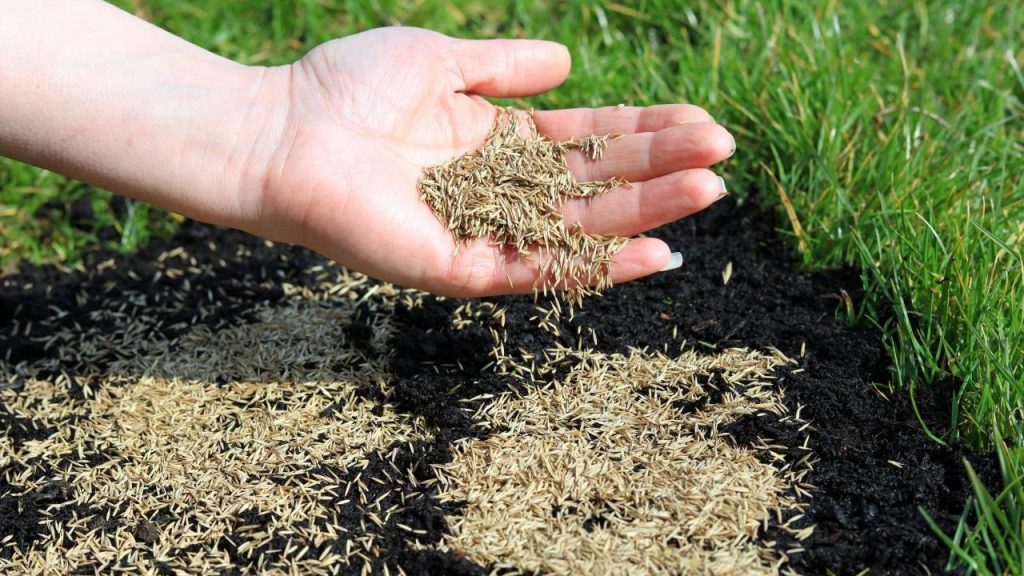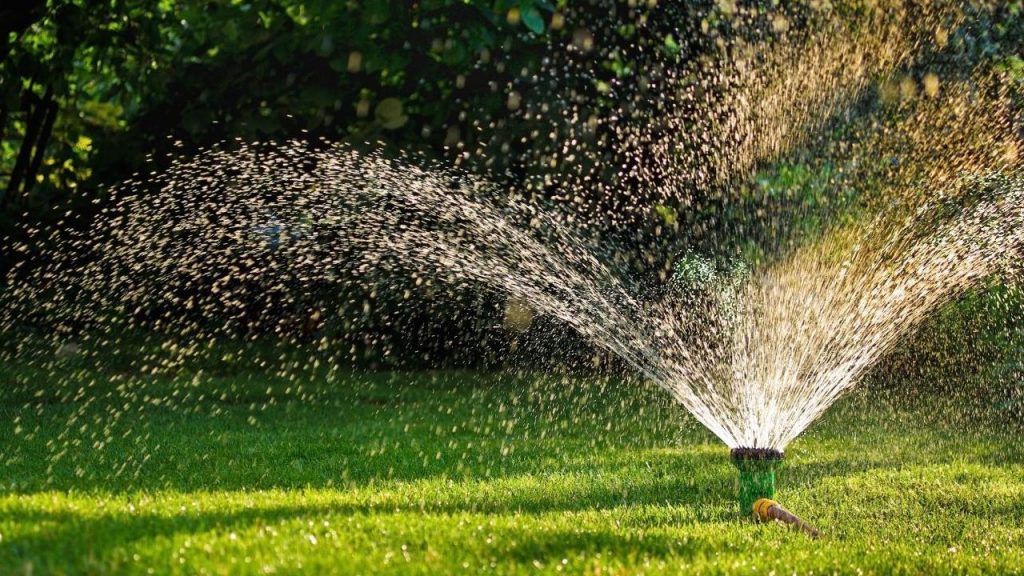A beautiful green lawn can greatly enhance the look and enjoyment of your outdoor space. However, establishing a thriving lawn from scratch requires knowledge, planning and effort. Proper grass seed selection, soil preparation, sowing techniques and post-planting care are all critical factors in growing a lush, healthy lawn. This comprehensive guide provides tips and step-by-step instructions for successfully planting grass seed and nurturing it into a perfect lawn.
When to Plant Grass Seed
Timing is an important consideration when planting grass seed. Cool spring and fall temperatures are ideal for seed germination and new grass growth. Sow seed during these periods to take advantage of natural rainfall and mild conditions.
Spring – Sow cool season grasses like fescue and bluegrass 2-4 weeks before the last expected frost date in your area. This allows seeds to germinate and establish roots before summer heat arrives.
Fall – The best time for fall seeding is from late August through September. Lower temperatures and fall rains provide an excellent environment for seed germination and growth before winter dormancy.
Avoid sowing during the heat and dryness of summer or when the ground is frozen in winter. Seeds may fail to thrive when sown during these conditions.
Choose the Right Grass Seed Mix
When selecting seed, consider your climate, sun exposure, soil type and desired use for the lawn. Buy quality seed from a reputable dealer. Here are some top grass seed varieties:
- Tall fescue – Hardy, drought-resistant cool season grass that grows well in full sun and shade. Good for northern lawns.
- Kentucky bluegrass – Soft-bladed, deep green grass that withstands cold. Requires full sun and moderate water.
- Perennial ryegrass – Fast-growing cool season grass with fine blades. Tolerates light traffic.
- Bermudagrass – Aggressive, heat-loving warm season grass. Withstands heavy foot traffic.
- Zoysia – Slow-growing warm season grass with excellent heat and drought tolerance.
You can purchase single variety or blended seed products. Blends combine several compatible grass species to provide thicker growth, durability and visual appeal.

Prepare the Soil
Proper soil preparation is vital for encouraging vigorous grass growth from seed. Follow these steps:
- Perform a soil test to determine pH and nutrient levels. Adjust as needed to create an optimal growing environment.
- Remove any existing grass, weeds or debris.
- Eliminate uneven spots and grade the area to improve drainage.
- Till or spade the soil to a depth of 4-6 inches to loosen the top layer. Break up compacted soil.
- Work in 1-3 inches of compost or other organic matter to enrich the soil.
- Level and rake the area to create a smooth, uniform surface for seeding.
Good soil prep establishes the ideal seed bed for establishing new grass plants.

How to Plant Grass Seed
Once soils are prepared, it’s time to sow the grass seed using proper techniques:
1. Calculate how much seed you need
- Measure the square footage of the lawn area to find the total size.
- Check the recommended seeding rate on the packaging (usually measured in pounds of seed per 1000 sq ft).
- Use the size and seeding rate info to determine how much seed to purchase.
2. Divide the seed into two batches
- Dividing the seed into two batches makes it easier to achieve even coverage over the lawn area.
3. Apply starter fertilizer
- Starter fertilizer provides an initial nutrient boost to help young grass plants thrive.
- Apply as directed on product packaging before seeding. Gently water in to dissolve fertilizer.
4. Broadcast the first half of seed
- Use a broadcast spreader or by hand to evenly distribute the first half of seed over the lawn space.
- Spread in perpendicular passes to ensure uniform coverage.
5. Lightly rake seed into soil
- Use a leaf rake to gently scratch the first round of seed into the top 1/4 inch of soil.
6. Apply second half of seed
- Repeat broadcasting and raking with remaining seed to complete coverage.
7. Roll the area
- Rolling presses seeds firmly into the soil and smooths the surface. Use a water-filled lawn roller or gently tamp with the back of a rake.
8. Apply straw mulch
- Spread a thin layer of straw to help retain moisture while seeds germinate.
- Apply 1-2 bales per 1000 sq ft. Gently water mulch to hold it in place.
9. Water thoroughly
- Use a sprinkler or irrigation system to deeply moisten seed bed. Keep soil moist but not saturated as seeds germinate.
Proper sowing techniques give grass plants the best possible start. Now it’s time to care for your seedlings!

Lawn Care for Newly Planted Grass Seed
Consistent care and maintenance are crucial while grass plants establish from seed. Follow these tips:
Water frequently – New seedlings require consistent moisture to thrive. Water daily to maintain lightly moist soil throughout germination. Gradually reduce watering frequency as grass matures.
Mow young grass – Begin mowing as soon as the new lawn reaches 3-4 inches tall. Set blades high (around 3 inches) and mow often to encourage thick growth.
Overseed bare spots – Quickly reseed any areas that fail to germinate to maintain an even lawn surface.
Apply fertilizer – Fertilize seeded lawns with a starter fertilizer once 4-6 weeks after germination. This supplies vital nutrients for growth.
Control weeds – Watch for weeds competing with tender grass plants. Hand pull weeds or spot spray with post-emergent herbicide.
Let grass establish – Avoid heavy use of newly seeded lawns for at least one growing season. This allows the root system to mature before facing traffic.
Diligent lawn care leads to a lush, healthy stand of grass from your seeding efforts.

Troubleshooting Seeded Lawns
Despite your best efforts, seeded lawns sometimes struggle to grow and fill in. Here are some common challenges and solutions:
Problem: Seed fails to germinate or sprouts sparsely.
Solution: Reseed bare areas. Ensure adequate watering, perform a soil test and amend as needed, and press seed into soil contact.
Problem: Grass seedlings die shortly after sprouting.
Solution: Young tender shoots can dry out quickly. Increase watering frequency and amount. Apply light mulch layer to help retain moisture.
Problem: Weeds take over the lawn area.
Solution: Hand pull weeds around fragile seedlings. Once established, mow regularly and apply selective herbicides to control invaders.
Problem: Seeds washed away by rain or irrigation water.
Solution: Cover newly seeded areas with straw mulch to protect from erosion. Check sprinkler coverage to prevent excessive runoff.
Don’t get discouraged! Proper diagnosis of issues along with attentive care will overcome most common lawn seeding troubles.
Conclusion
When armed with the right techniques and information, planting grass seed can yield a lush, beautiful lawn to enjoy. The keys are proper seed selection for your climate, thorough ground preparation, good sowing practices, and consistent maintenance during establishment. Address challenges promptly as they arise. With time and care, you’ll be rewarded with a perfect carpet of grass.
A successful lawn seeding project requires planning, effort and patience through the initial growth phases. But the end result is a gorgeous, durable lawn that will thrive for years to come. What are you waiting for? Get out there and start planting grass seed to grow your dream lawn!




Leave a Comment